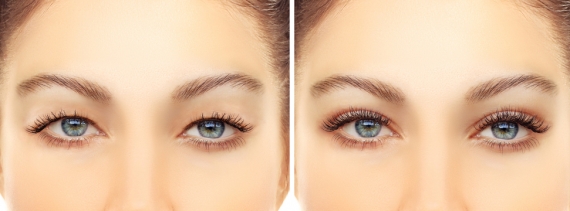Upper Lid Blepharoplasty
Do your upper eyelids feel heavy? Do your eyes have a hooded appearance? Eyelid droop is a condition that affects people of all ages. It can affect both the upper and lower eyelids. Fortunately, our expert surgeon, Dr. Rodriguez, at Elmquist Eye Group can diagnose the condition and perform an upper lid blepharoplasty surgery to correct the issue.
What is blepharoplasty?
 Eyelid surgery, also called “blepharoplasty,” is a cosmetic surgical procedure that can reverse the signs of aging of the upper and/ or lower eyelids by adding or removing fat deposits and loose, sagging skin from the lids. It is one of the most common cosmetic procedures in the U.S. today and can be done to address issues such as:
Eyelid surgery, also called “blepharoplasty,” is a cosmetic surgical procedure that can reverse the signs of aging of the upper and/ or lower eyelids by adding or removing fat deposits and loose, sagging skin from the lids. It is one of the most common cosmetic procedures in the U.S. today and can be done to address issues such as:
- Drooping and sagging eyelids
- Lines and wrinkles
- Puffiness in the eyelid area
- Excess eyelid fatty deposits
- Eyelids that sag into your field of vision
- Tired appearance
- Poor vision (in some cases)
Depending on the extent of the surgery, blepharoplasty can open up the appearance of the eyes and make you look more awake and refreshed. It can also reduce wrinkles and creases.
What is the surgery like?
The procedure is an outpatient procedure. You will be given local twilight anesthesia and remain comfortable throughout the entire procedure. Each lid takes about 20 minutes and surgeons can do both upper lids in the blepharoplasty procedure.
The surgeon makes an incision in the upper eyelid, along the natural crease. The surgeon then tightens a small muscle known as the levator muscle to lift the lid. The surgeon will likely also reposition fat or may remove excess skin from the lid. The incision is then closed with very fine sutures.
What are the surgical risks?
While any surgical procedure carries some risk, the risk associated with blepharoplasty surgery is very low and includes dry eye, hematoma or possible scratched cornea.
What is recovery like?
After the surgery, we ask you to sleep for one week with your head slightly elevated to reduce swelling post-surgery. You should not sleep on your face. Most of our patients have very little pain, which usually goes away on day two or three. While most patients don’t take any medication after the first day, pain can easily be controlled by over-the-counter Tylenol.
Pain is minimal and so is bruising. You will likely experience some mild to moderate swelling, the worst of which usually occurs on day two. Each day thereafter, swelling subsides fairly rapidly.
Some people worry about eyelid surgery because they do not want to deal with lingering scars. Experienced surgeons like those at Elmquist Eye Group make tiny incisions that follow the natural creases of the eyelid. As a result, scars are camouflaged, and they fade away completely over time.
We will require you to come in for a follow-up appointment the day after your surgery, so that we can make sure everything is fine. About six days after surgery, we will remove the sutures, and after that, you can resume normal activities and even wear makeup.
Trust in Elmquist
If you are having eyelid issues, you can trust the professionals at Elmquist Eye Group to do a thorough exam and upper lid blepharoplasty that is both safe and effective. If your droopy eyelids are causing you problems, don’t suffer any longer. Call us today to make an appointment at Elmquist Eye Group.
